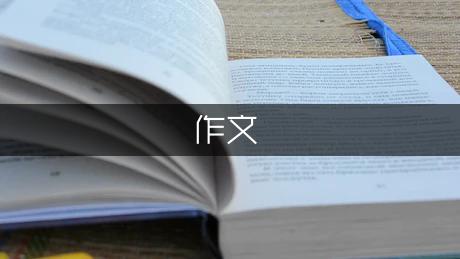教学目标: 1、认识2个生字,掌握2个多音字。 2、通过多种形式地读,理解课文内容,领悟寓言所含的道理。 3、懂得应该听取他人的劝告,及时改正错误的行为。
教学重难点: 理解词语的意思,领悟寓言所揭示的含义。

教学过程:
一、揭示课题,引入新课 1、呈现课题,这是个成语,我们一起来读一遍。(学生齐读) 2、这个成语中,你有不理解的字吗? 亡:失去;牢:牲畜圈,指羊圈。 3、现在你知道这个成语的意思了吗?(学生尝试解释) 4、从这个课题,你学到了什么?你有什么疑问吗?(学生自由回答、提问)
二、初读课文,扫除障碍 1、教师示范读课文,注意正确发音。 2、自由读课文,读后将本课的生字带词读一遍。 3、检查自学成果: (1)选择正确的读音 窟窿(kūlóng;kūlong) 废窿(lónglong) 街坊(fāngfang) 坊本(fāngfang) 圆圈(quānjuàn) 羊圈(quānjuàn) 钻研(zuānzàun) 钻石(zuānzuàn) 重点强调:多音字在意义上的区别 你是怎样来区分的?指名汇报通过查字典区分多音字的不同意思。 (2)强调字形,理解字意 “窟窿”都是穴字头,所以和洞有关。注意“窿”字的“生”上面有一横。 “街坊”:你家有街坊吗?街坊就是邻居的意思。
三、通读课文,理解内容 1、本课的生字、生词我们都弄清楚了,现在你能读课文吗?(指名读课文)大家思考:这篇寓言主要写了一件什么事?(用一句话概括) 板书:第一次第二次 2、羊是怎样丢的呢?默读课文的1—4自然段,思考:第一次丢羊是什么原因?第二次丢羊又是什么原因? 学生结合问题自由回答:第一次丢羊是因为羊圈有个窟窿。 第二次丢羊是因为他没有及时把羊圈修补上。 小结:那么这部分可以用课题中的哪两个字概括?(亡羊)对,这部分告诉我们,养羊人是怎么会丢了两次羊。 3、养羊人又是怎样“补牢”的呢?结果又怎样呢?让我们自由地读一读第5自然段。 结合朗读,自由回答:养羊人后悔了,赶快把羊圈补上了,以后再也没丢羊。 4、练习复述
四、品读评价,体会寓意 1、请你评价评价这位养羊人,你认为他是个怎样的人? 友情提示:我们不能毫无根据地随便评价他人,对养羊人做出的任何一个评价,都要有根有据,理由充分。 (1)自由读课文,动笔画一画。 (2)在小组内交流 2、全班交流评价 (1)养羊人是个不听劝告的人: A、从他与街坊的对话中,看出他不听别人的劝告。 他的话应该用怎样的语气来读?(漫不经心,毫不在意,无所谓的语气)大家尝试读一读,指名朗读。 街坊的话应该怎样来读?你是从哪个词知道的?(从“赶快”知道街坊很为他着急,感到可惜,读出劝的语气) 指名尝试读 分角*来读对话,体会对话双方的不同的心情。 B、从第4自然段中的两个“又”,感觉他这个人太一意孤行了。知道有第一次的丢羊,就应该想到还会丢,可他偏偏不去修补,导致他又有了第二次的丢羊。 这两个“又”应该怎样来读?大家尝试读第4自然段,体会养羊人的可气之处。 (2)养羊人是个知错能改的人 这个养羊人真是可气,那么养羊人就没有一点值得我们学习的地方吗? 默读最后一段。学生发表自己的看法。 结合学生的回答,引导学生抓住“后悔”“不该不”想象一下养羊人当时后悔的心情。尝试读出当时的心情。你能把这句话换一种说法吗?(哦,差不多了,只剩最后一小节了。我们继续:
五、明确寓意,指导实际 我们这节课学习了寓言《亡羊补牢》,你都明白了什么道理? 在我们今后的学习和生活中,应该怎样去做呢? 板书: 亡第一次丢羊毫不在意未 羊第二次丢羊后悔——修羊圈为 补结果再也没丢迟 牢(听劝告,知错及时改正)也
这是最后一节,我们总结了故事的寓意,并且将其应用到我们的生活中。接下来,你有什么想法或问题吗?
《亡羊补牢》教学设计2
深入学习“亡羊补牢”:从寓言故事到生活智慧
教学目标:
理解寓言内容,体会“亡羊补牢”的寓意。
能联系学习生活实际,懂得要听取别人的劝告,做错了事要及时纠正。
教学重难点:
理解寓言内容,体会“亡羊补牢”的寓意,并能联系实际生活。
教学方法:
自主学习、引导、合作探究、情境创设、角*扮演
教学过程:
一、 成语猜谜,引入课堂
1. 游戏互动,激发兴趣:
师:同学们,你们喜欢玩猜谜游戏吗?今天老师给大家带来几个有趣的图片,看看谁能猜出它们代表的成语!
(PPT 依次展示图片:狐假虎威、刻舟求剑、拔苗助长、鹬蚌相争、亡羊补牢)
学生积极猜想,并说明理由。
2. 揭示主题,引出课题:
师:同学们真厉害,一下子就猜出来了!这些成语都来自于一个个生动有趣的故事,我们把这种故事叫做——寓言。
(板书:寓言)
师:寓言有什么特点呢?
师:今天我们就一起来学习一则寓言故事——《亡羊补牢》。(板书课题,学生齐读)
二、 初识故事,整体感知
1. 听读课文,标记段落:
师:请同学们认真听录音,边听边思考:故事讲了一件什么事?
(播放课文录音,学生静心聆听)
师:请同学们打开课本,自由朗读课文,并用“//”给课文分段。
2. 理清脉络,复述故事:
师:谁能用自己的话说说,这个故事讲了一件什么事?
(学生自由发言,教师引导学生补充完善)
师:为了帮助大家更好地理解故事,我们可以把故事分成三个部分:起因、经过、结果。谁能找到这三个部分分别在课文的哪些段落呢?
(学生讨论回答,教师板书:起因、经过、结果,并引导学生用简洁的语言概括每个部分的内容)
三、 深入探究,理解寓意
1. 合作学习,完成导学案:
师:同学们对故事内容已经有了初步的了解,下面请大家四人一组,合作完成导学案上的题目,进一步深入学习。
(导学案内容如下,教师巡视指导)
(1) 说说“亡羊补牢”这个成语中“亡”和“牢”的意思。( )
(2) 养羊人一共丢了( )次羊。每次丢羊的原因是什么,他分别是怎么想的,又是怎么做的?结果如何?完成表格。
| 次数 | 丢羊原因 | 养羊人的想法 | 养羊人的做法 | 结果 |
| ---- | -------- | :----------------: | :----------------: | :----: |
| 第一次 | | | | |
| 第二次 | | | | |
(3) 养羊人在修补羊圈时,他的邻居恰好经过,想想他们会说些什么?请动起你的金手指,写下他们可能说的话。
邻居说:_______________________________________________________
养羊人说:_____________________________________________________
(4) 生活中,我们有很多类似养羊人的例子,请举出一个事例。
2. 交流分享,碰撞智慧:
(各小组代表依次上台汇报学习成果,其他小组认真倾听,并进行补充和评价)
师生共同针对导学案中的重点问题进行深入探讨:
“亡”和“牢”的意思
养羊人两次丢羊的原因、想法、做法及结果
邻居和养羊人之间的对话
生活中的类似事例
3. 升华主题,揭示寓意:
师:同学们,养羊人虽然丢了羊,但他后来听取了( )的劝告,及时( ),所以没有再( )。可见他是个( )的人。(根据学生的回答板书:邻居、修补羊圈、丢羊、知错就改)
师:犯了错误,只要能像养羊人那样,认真反思,积极改正,就不算晚。(板书:知错就改,为时不晚)
四、 情景演绎,拓展延伸
1. 角*扮演,体会情感:
师:同学们,我们来发挥想象力,扮演故事中的角*,把养羊人修羊圈时与邻居相遇的场景表演出来吧!
(学生自愿组成小组,分配角*,设计台词,进行表演)
2. 联系实际,学以致用:
师:在我们的学习和生活中,难免会犯一些错误,你能举个例子,说说你是如何“亡羊补牢”的吗?
(学生分享个人经历,教师进行点评)
师:今天我们学习了寓言故事《亡羊补牢》,懂得了“知错就改,为时不晚”的道理。希望同学们在今后的学习和生活中,能够牢记这个道理,做一个勇于改正错误,不断进步的人。
2. 课后思考,拓展延伸:
《亡羊补牢》教案3
Today's Lesson: Learning the Character"寓"
Introduction: Today we are studying Lesson 21,"Two Fables."
Discussing the topic with the teacher, reading the topic.
Learning the character"寓,"focusing on common mistakes.
What is a fable? Which fables have we learned before?
The fables we are learning today are"Two Fables,"which ones are they?
In this lesson, we will study"Mending the Fold After the Sheep Are Lost"and write together with the teacher.
Initial Reading of the Text, Learning New Words, and Explaining the Title.
Before class, I asked everyone to look up the meanings of"亡"and"牢"in the dictionary.
After students' discussions, I presented the slides and had the students read the meanings.
"亡"and"牢"each have three meanings in the dictionary, but what do they mean in the text?
Read the text freely, pronounce the words correctly, understand the sentences, and think about the meanings of"亡"and"牢"in the text.
Slide: (1) Originally, the sheepfold had a hole, and at night a wolf slipped in through the hole and carried away a sheep. Read; learn the polyphone"团"; memorize"hole", pay attention to the light sound of"hole"; the last stroke of"carry". (2) He regretted it very much, should not have accepted the neighbor's advice, thinking, it is not too late to repair now. Learn new words"regret"; the pronunciation of"neighborhood", change the word for neighborhood; read this sentence. 7. What does"Mending the fold after the sheep are lost"mean literally? (The sheep is lost and the sheepfold is repaired.) Transition: How does the text tell us this story?
Reading the Text Carefully.
Read the first paragraph aloud. How many sentences are there?
The first sentence, with just a few words, reveals what the protagonist does; the second sentence describes what happened? The third sentence describes the reason. Guide the students to read this paragraph. Infiltrate the concise language characteristics of fables: concise.
How did the neighbors find out? Guide the students to read, reading out the anxious mood.
What was the shepherd's attitude? How did he respond? Read out the indifferent appearance.
Read paragraphs 2 and 3 role-playing.
Is the shepherd's thinking correct? Read the fourth paragraph, highlighting the word"again".
How did the shepherd think this time? Read the first sentence of the fifth paragraph. Use"if... then"to change the way of expression.
What did he do? What were the results? Read sentences 2 and 3.
View the picture and tell the story.
In the book's illustration, who is with whom, and what are they doing?
Observe the expression of the neighbors, one of whom is telling the story to the other two.
How did he tell it? Call out the name to tell the story.
Understand the truth. Through studying the fable"Mending the Fold After the Sheep Are Lost,"what truth do you understand? (Find mistakes and correct them in time.)
Expansion. Have you encountered similar situations in life?
Homework:
Read a fable you like.
Write a reflection on"Mending the Fold After the Sheep Are Lost."











